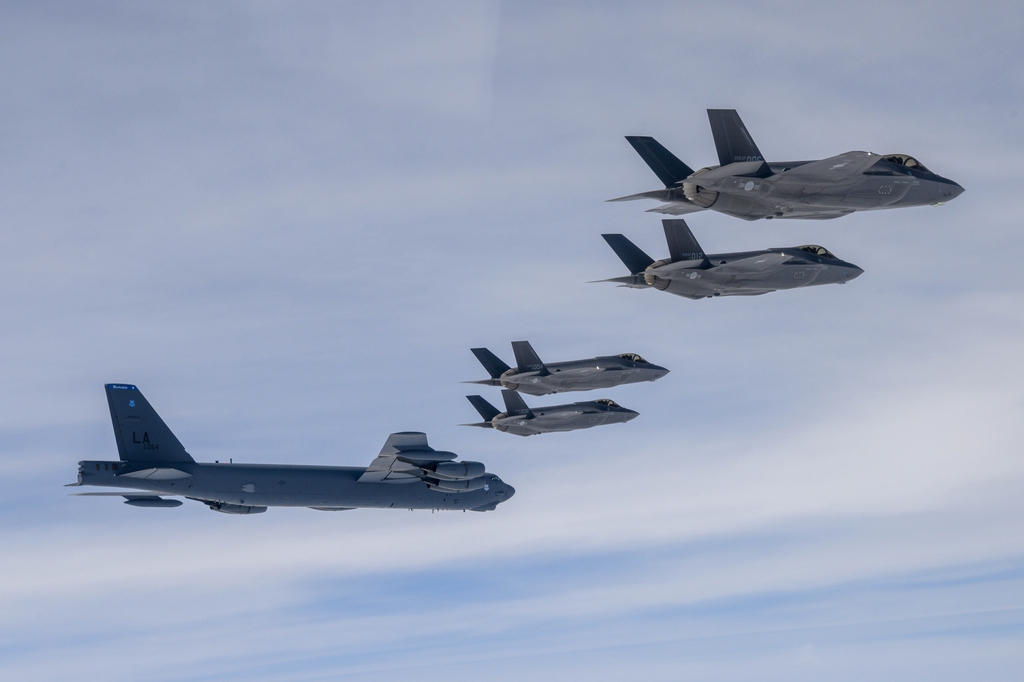- California Assembly OKs highest minimum wage in nation
- S. Korea unveils first graphic cigarette warnings
- US joins with South Korea, Japan in bid to deter North Korea
- LPGA golfer Chun In-gee finally back in action
- S. Korea won’t be top seed in final World Cup qualification round
- US men’s soccer misses 2nd straight Olympics
- US back on track in qualifying with 4-0 win over Guatemala
- High-intensity workout injuries spawn cottage industry
- CDC expands range of Zika mosquitoes into parts of Northeast
- Who knew? ‘The Walking Dead’ is helping families connect
S. Korea, U.S. stage air drills, involving B-52H bomber, after N. Korea’s ICBM launch
South Korea and the United States held joint air drills, involving at least one B-52H strategic bomber, on Friday, Seoul’s defense ministry said, a day after North Korea test-fired a new intercontinental ballistic missile (ICBM).
The North’s state media has confirmed the country conducted its first test of a solid-fuel Hwasong-18 ICBM on Thursday, raising tensions already heightened by its earlier weapons tests, including those of underwater nuclear attack drones.
The South Korean Air Force mobilized its F-35A radar-evading fighters and F-15K jets for the drills, while the U.S. side deployed F-16 fighters in addition to the bomber, according to the ministry.
It did not specify in which part of the Korean Peninsula the drills took place.
“It is assessed that (the drills) represented a close-knit, coordinated response demonstrating the powerful ‘strength of the alliance’ and the United States’ will to provide extended deterrence against the recent series of North Korean provocations,” the ministry said in a press release.
The drills reaffirmed the capability to swiftly deploy U.S. strategic assets to the Korean Peninsula as well as the allies’ enhanced combined operational capabilities and interoperability, it added.
The ministry also said the allies will demonstrate “through action” their resolve not to accept any nuclear attack from the North by strengthening the frequency and intensity of the deployments of U.S. strategic assets.
Strategic assets usually refer to high-profile military assets, such as nuclear-powered aircraft carriers, submarines and strategic bombers.
The latest deployment of the B-52H bomber followed its earlier dispatch to the Korean Peninsula for allied drills on Wednesday last week and on March 6.












